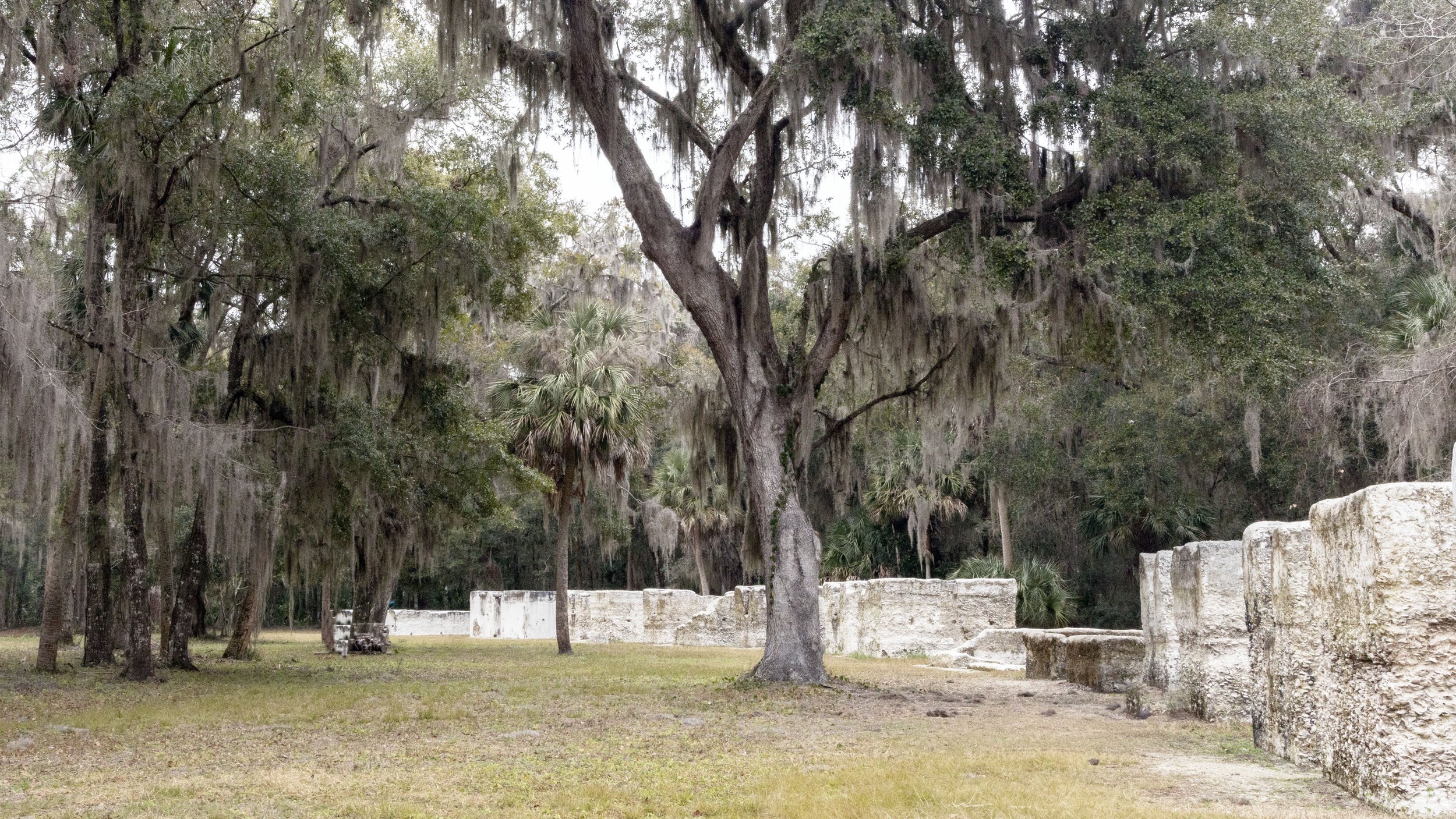








Tabby Ruins
Coming upon the slave cabin ruins at the Kingsley Plantation in Florida grabbed my attention completely: the roughness of the tabby, the graceful arc of the arrangement of structures, the monolithic shapes of the worn-down walls. Within months, I was working on a book of photos. Here is the accompanying text:
The Tabby Ruins at the Kingsley Plantation
Backed up against a creek, 25 freestanding
shapes stand in a half circle. They appear
as sculptures, abstracted forms in deeply
weathered white tabby, ranging from
two to six feet in height. Each form
is divided by an interior wall and
marked by the remains of a brick chimney.
Not sculptures, they are remnants of slave quarters.
The ruins are a powerful sight.
Their whiteness and rough textures
call our attention.
The even spacing in a curve intrigues.
Together they are reminiscent, in a way, of the
stone circles of England,
a Stonehenge commemorating slavery.
To see them is to understand that
the enslaved people trapped here
lived in mean, small houses,
the thick oyster shell walls pointy, pokey
and piercing. The buildings afforded
no comfort. In the 1820’s, 32 cabins housed
some 80 slaves, including children.
Today 25 ruins remain.
These ruins, now shapes and textures,
are monuments to those who suffered in bondage.
Worn-down dwellings,
made of oyster shells and sand,
they are deteriorating, wearing away
shell by shell. Together they form a kind of
cemetery, giant headstones reminding us
that people suffered and died here.